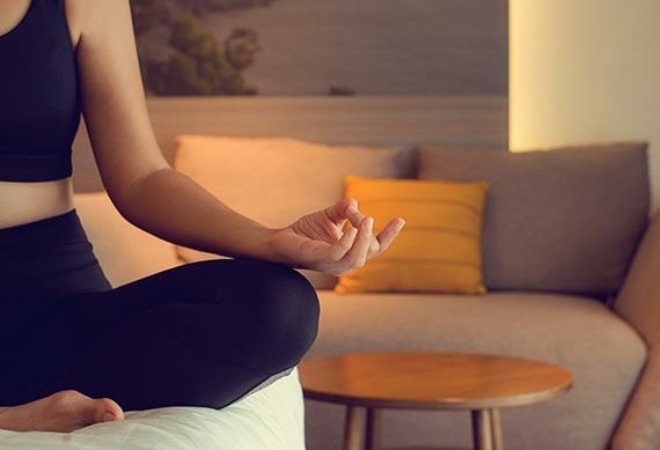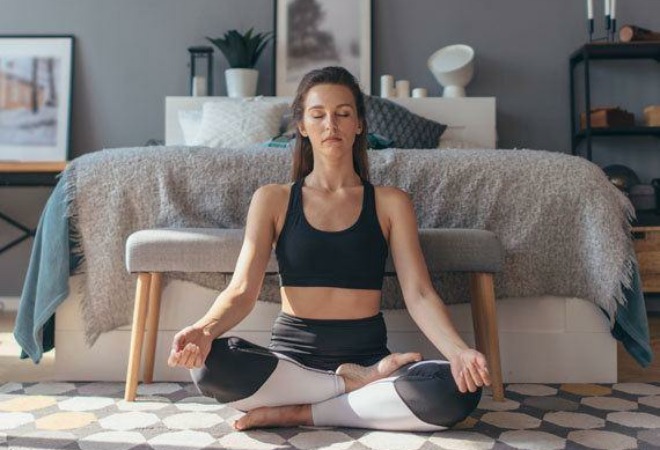Improving your posture, easing tension, and preparing your body for restful sleep can be as simple as incorporating a few mindful movements and breathing techniques into your daily routine. The following exercises are designed to reset your posture, relieve discomfort, and promote relaxation.
Static back position
The static back position, also referred to as the 90-90 position, is a fantastic postural reset that I demonstrate to just about everyone I see in practice. It puts you in a neutral position, so it takes out most of the postural distortions we have. It’s a great way to ease lower back or neck pain and allows your body to relax so you can have a good night’s sleep. Here’s how to do it:
- Lay on the ground with your hips bent to 90 degrees and your knees bent to 90 degrees. Put your lower legs up onto a chair, table or bed.
- Place your arms out by your side with the palms facing the roof. The exact arm position is not important, just place them where it feels most comfortable (for most people, this is between 45 and 90 degrees).
- Now just lie here! I usually recommend up to 20 minutes.
Cat cow move
The cat/cow exercise is one of my favourite yoga exercises to do – it’s also known as cat/dog or cat/camel. Practicing this flow is an excellent way to get some movement into your spine. Here’s how to do it:
Start on all fours with your hands under the shoulders and your knees under the hips.
As you inhale, push the mid-back up towards the roof, tuck your pelvis under and drop your head towards the ground.
As you exhale, lower the mid-back towards the ground, tilt your pelvis forward and lift your head.
I usually suggest ten slow and controlled repetitions. Try our linen quiz to find out what type of bed linen suits your sleep style best.
Child's pose
Child’s pose is another favourite yoga stretch that I enjoy practicing regularly. Here’s how to do it:
Kneel on the floor and then sit back onto your heels.
Lean forward so that your torso is resting on your thighs.
You can do two things with your arms: either lay your hands on the floor alongside your body with the palms up, or, stretch your arms in front of you with the palms down.
You then hold this position, breathe and relax. Stay here for at least 30 seconds, but you can stay here as long as it is comfortable.
Breathing techniques
A simple breathing technique I often suggest to people is called ‘tactical breathing’. If you want to fall asleep quickly, this simple breathing technique could help with the stresses of day-to-day life. Breathing slowly into your diaphragm can help shift you from a stressed or sympathetic state into a more relaxed or parasympathetic state. Our parasympathetic system is our rest and digest state and is where all of our healing occurs. You can utilise this technique whenever you like during the day, but it can really work once you’ve turned the lights out and are ready to go to sleep. It goes like this:
- Breathe in through your nose into the diaphragm for 4 seconds (make sure your abdomen is rising during this and not your rib cage).
- Hold the breath in for 4 seconds.
- Breathe out through pursed lips for 4 seconds.
- Hold the breath out for 4 seconds.
- Repeat four times.




